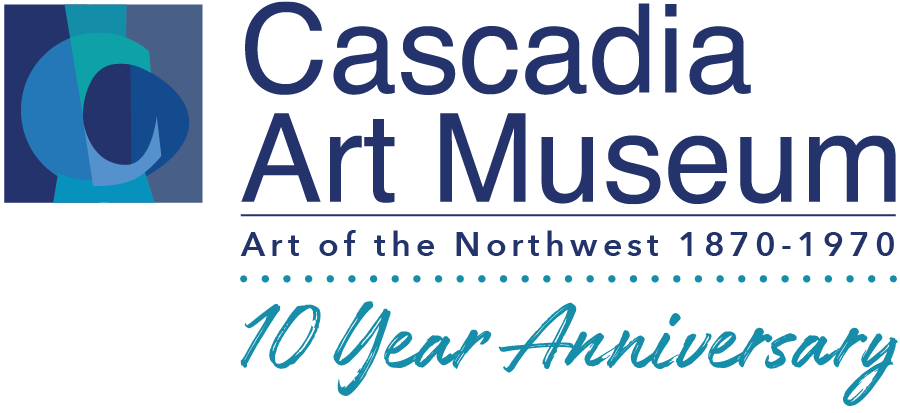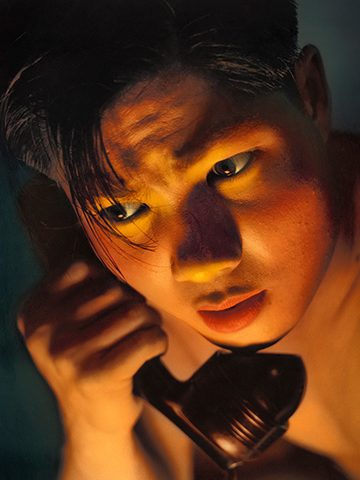Original article published by the International Examiner, written by Kevin Phan on December 13th, 2023.
Within the Asian American imaginary, there lies a myriad potentialities for futurities that showcase the Asian American experience, body, and empowerment. Through David Martin’s curation of Full Light and Perfect Shadow: The Photography of Chao-Chen Yang, audiences are generously offered an extensive overview of Chao-Chen Yang’s oeuvre, which consists of sketches, advertisements, and portraiture.
One of Yang’s most notable photographs, “Apprehension” (1949-50), is featured at the center of the exhibition space. In this image, Chao-Chen Yang confronts the agency and imagination of the Asian American individual, creating a space for himself as protagonist in a Western zeitgeist.
While museum patrons are able to view this iconic piece, the show presents much more about Chao-Chen Yang and creates an accessible environment for curious viewers to engage with the artist and his works more intimately. Generously donated by Chao-Chen Yang’s son, Edgar, visitors can grasp Chao-Chen Yang’s livelihood via the installation of his works.
Chao-Chen Yang initially worked as a visual artist, painting and drawing during his time at the Art Institute of Chicago in 1933, though his developing interest in photography is evidenced by an untitled figure drawing from 1936 and a subsequent photo “Rickshaman” (1937-38), which portrays the same model. As visitors roam the gallery, they are provided with wall didactics throughout which give context for Yang’s explorations into specific mediums and techniques.
In spite of Yang’s shift in focus to photography, there is still a presence of his painterly touch in many of his black and white works.
Through both Yang’s photographic portraits and landscapes, he employs a composite photography technique, along with brushstrokes to hint at droplets on a face or the movement of water. Composite photography is the use of multiple images and layering said images to create a new scene, a new environment; a speculative place of the artist’s ideation. Figures in these images simultaneously become highlighted and blended, the tacit form asserting its aura.
Yang often uses himself as the model within the photos, such as in “Solitude” (1940). Despite the faceless figure being shrouded in the shadows, he preserves his agency and power.
The show Full Light and Perfect Shadow is respectful and successfully conveys its reverence toward the artist, his family, and his collaborators. There is an obvious hand of tenderness throughout the exhibit, seen through the wall text as well as the installation of the works and through the photography book of the same name.
In spite of Chao-Chen Yang’s conflicts regarding anti-Asian and Sinophobic sentiment during the late 1940s, the artist continued to produce these images. The Asian figure is a centerpiece among Chao Chen-Yang’s works and through these gestures of creative freedom, Yang pioneered the Asian American imaginary, along with other contemporaries of his time.
Full Light and Perfect Shadow exposes Yang’s work to those who might have been unfamiliar and generally provides audiences with means to learn the history and contexts of where works of Asian American artists in the Pacific Northwest were conceived.
Light and shadow work in tandem to illuminate the scene, and this interplay of light exposes the film to create the photograph. Shadows impose on the Asian body; the Asian figure defies this imposition and makes himself known.
In a similar fashion, this show elucidates viewers to Chao-Chen Yang’s wider body of work and the circumstances informing it.
There is much care and passion for foregrounding Asian American artists throughout this show, thanks to curator David Martin and Edgar Yang. It urges the viewer to question the kinds of other stories left unnoticed. Like Chao-Chen Yang, we can exert our own agency and futurities through the images we create of ourselves.


